
The fauna of Australia consists of a large variety of animals; some 46% of birds, 69% of mammals, 94% of amphibians, and 93% of reptiles that inhabit the continent are endemic to it. This high level of endemism can be attributed to the continent's long geographic isolation, tectonic stability, and the effects of a unique pattern of climate change on the soil and flora over geological time. A unique feature of Australia's fauna is the relative scarcity of native placental mammals. Consequently, the marsupials – a group of mammals that raise their young in a pouch, including the macropods, possums and dasyuromorphs – occupy many of the ecological niches placental animals occupy elsewhere in the world. Australia is home to two of the five known extant species of monotremes and has numerous venomous species, which include the platypus, spiders, scorpions, octopus, jellyfish, molluscs, stonefish, and stingrays. Uniquely, Australia has more venomous than non-venomous species of snakes.
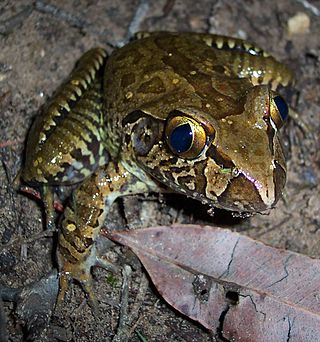
Conondale National Park is 130 km north of Brisbane in the Sunshine Coast Hinterland near the town of Conondale in the south east Queensland bioregion. The park covers an area of 35,648 hectares protecting large areas of subtropical rainforest, woodlands, wet and dry sclerophyll forest including Queensland's tallest tree. The park contains areas of regenerating forest which have been previously logged; areas of forest plantations also border the park. The park is currently managed by the Queensland Government under the Nature Conservation Act 1992.
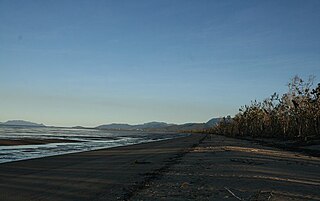
Girramay is a national park in Queensland, Australia, 1269 km northwest of Brisbane. The national park is part of the Wet Tropics World Heritage Area.
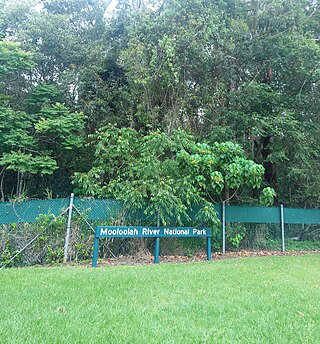
The Mooloolah River National Park is a nationally protected area located on the Sunshine Coast, Queensland. It covers an area of 830.9 hectares and is bordered by the Mooloolah River to the east, Claymore and Dixon Roads to the west, and the Lower Mooloolah River Environmental Reserve to the south. It is bisected by the Sunshine Motorway with the northern, 161.93 hectare component of the Park being a later addition. The Park was initially vacant crown land prior to national park designation in 1960. Surrounding land uses include livestock grazing, urban development and the campus of the University of the Sunshine Coast. It is the second largest mainland park on the coastal lowlands in South East Queensland after Noosa National Park and represents an example of low-lying coastal floodplain distinctive of the region.

The Florida Keys National Marine Sanctuary is a U.S. National Marine Sanctuary in the Florida Keys. It includes the Florida Reef, the only barrier coral reef in North America and the third-largest coral barrier reef in the world. It also has extensive mangrove forest and seagrass fields. The Florida Keys National Marine Sanctuary, designated on December 28, 1990, was the ninth national marine sanctuary to be established. The Florida Keys National Marine Sanctuary protects approximately 2,900 square nautical miles of coastal and ocean waters from the estuarine waters of South Florida along the Florida Keys archipelago and the Hawk Channel passage, encompassing more than 1,700 islands, out to the Dry Tortugas National Park, reaching into the Atlantic Ocean, Florida Bay, and the Gulf of Mexico.

David Howells Fleay was an Australian scientist and biologist who pioneered the captive breeding of endangered species, and was the first person to breed the platypus in captivity.
Pulau Semakau is located to the south of the main island of Singapore, off the Straits of Singapore. The Semakau Landfill is located on the eastern side of the island, and was created by the amalgamation of Pulau Sakeng, and "anchored" to Pulau Semakau. The Semakau Landfill is Singapore's first offshore landfill and now the only remaining landfill in Singapore.

Brisbane Forest Park, is located on parts of the D'Aguilar Range. The large nature reserve lies on the western boundary of City of Brisbane into the City of Moreton Bay, Queensland, Australia, in Enoggera Reservoir, adjacent to The Gap and between the Mount Coot-tha Reserve on the Taylor Range and higher peaks to the north. Brisbane Forest Park supports plants and animals and is essential to their survival. The main entrance is located in the suburb of The Gap although there are a number of other access points.
The Australian Marine Conservation Society (AMCS) is an Australian environmental not-for-profit organisation. It was founded in 1965 as the Queensland Littoral Society before changing its name to the Australian Littoral Society and then finally in 1995 to its current title. It works on protecting the health and vitality of Australia's coasts and oceans.

Wild Life Sydney Zoo is a wildlife park in the Darling Harbour precinct, on the western edge of the Sydney central business district, Australia. Opened in September 2006, the zoo is located adjacent to a leisure and retail precinct that includes the Sea Life Sydney Aquarium and Madame Tussauds Sydney.

The Shoalwater Bay Military Training Area is a heritage-listed military installation at Byfield Road, Byfield, Shire of Livingstone, Queensland, Australia. It is a large, relatively undisturbed and intact natural system with a wide variety of coastal landforms and a high level of biodiversity. It contains a diverse range of marine and coastal wetland landscapes, vegetation types and ecosystems. It was added to the Australian Commonwealth Heritage List on 22 June 2004.

Currimundi is a coastal suburb of Caloundra in the Sunshine Coast Region, Queensland, Australia. In the 2021 census, Currimundi had a population of 6,570 people.
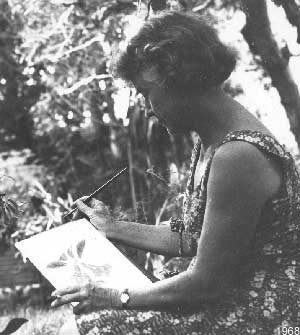
Kathleen McArthur was an Australian naturalist, writer, botanical illustrator and conservationist. She was born in Brisbane, Queensland, to Catherine and Daniel Evans. Her mother was a daughter of the Durack pastoral family, her father a co-founder of the engineering firm Evans Deakin and Company. She married Malcolm McArthur in 1938 and had three children before divorcing in 1947. From 1942, she lived at Caloundra on the Sunshine Coast, Queensland.
The Australian Wildlife Society was established in Sydney, Australia in May 1909 as the Wildlife Preservation Society of Australia (WPSA) to encourage the protection of, and cultivate an interest in, Australia's flora and fauna. The founding president of the Society was The Hon. Frederick Earle Winchcombe MLC. David Stead was one of four vice presidents and a very active founder of the Society.
Margaret Grace Thorsborne was an Australian naturalist, conservationist and environmental activist. She was notable for her efforts, with her husband Arthur Thorsborne, in initiating the long-term monitoring and protection of the Torresian imperial-pigeon on the Brook Islands, north east of Hinchinbrook Island, Far North Queensland. Toward the end of her life, she was involved in the struggle to protect Queensland’s Wet Tropics World Heritage Area and animals such as the southern cassowary, mahogany glider and dugong.

The Territory Wildlife Park is a zoo at Berry Springs in the Northern Territory of Australia, some 31 kilometres (19 mi) south of Darwin. It opened in 1989. Situated on 400 ha of natural bushland, it contains native animals and plants representative of Northern Territory, and especially Top End tropical monsoonal, environments. It contributes to their conservation through research programs as well as through public education. The three main habitats represented are woodland, wetland and monsoon vine forest.

Moggill Creek is a creek in Brisbane, the largest city in Queensland, Australia. The creek rises on the Taylor Range and runs in a south-easterly direction from the southern edge of Brisbane Forest Park in Kholo and Pullenvale, flowing through Upper Brookfield, Brookfield and joining the Brisbane River at Kenmore. Before entering the Brisbane River the creek is crossed by Moggill Road and winds through Rafting Ground Reserve.

Mangrove ecosystems represent natural capital capable of producing a wide range of goods and services for coastal environments and communities and society as a whole. Some of these outputs, such as timber, are freely exchanged in formal markets. Value is determined in these markets through exchange and quantified in terms of price. Mangroves are important for aquatic life and home for many species of fish.
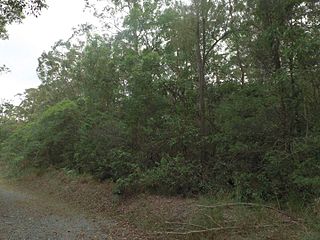
Nerang National Park is a national park in Queensland, Australia situated on the Gold Coast. The protected area is located 12 kilometres (7.5 mi) from Surfers Paradise on Nerang’s north-west outskirts.
Currimundi Lake Conservation Park is a protected area that is located in Wurtulla, north of Currimundi, approximately 4 km (2.5 mi) north of Caloundra, Queensland, Australia.


















